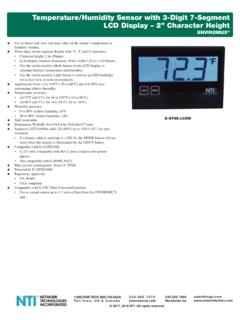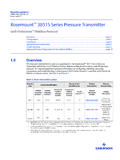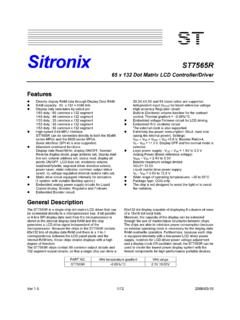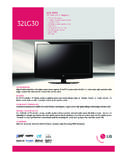Transcription of AN1428, LCD Biasing and Contrast Control Methods
1 2012 Microchip Technology 1AN1428 INTRODUCTIONThis Application Note provides Methods that can beused to provide Biasing voltages for Liquid Crystaldisplays. This document covers most of the biasingmethods used in the PIC microcontrollers with an TYPESLCD types and LCD waveforms determine the type ofbiasing that is required. There are different kinds ofLCD Biasing , based on the are two electrodes where the LCD waveforms aredriven; they are called SEGMENTs (SEGs) andCOMMONs (COMs). The LCD requires an AC waveformto be applied between these electrodes. Based on the number of segment and COMMON electrodes, the LCDs can be classified in two or Direct Drive DisplaysStatic or Direct Drive LCDThe static waveform will have only one COMMON elec-trode and multiple segment electrodes.
2 The numberof pixels it can drive is the number of SEGMENTs onthe LCD. Figure 1 shows a static LCD configuration. There are1 COMMON and 8 SEGMENTs, so the number of pixelsthat can be driven is the number of COMs, multiplied bythe number of SEG pins, resulting in 8 1:COMMON AND segment CONNECTIONS FOR STATIC DISPLAYAn AC voltage needs to be applied to the SEGMENTand COMMON. For a static display, there are only twolevels for the voltage that are applied. These levels,which are driving the LCD, are called bias voltages. Astatic LCD wave will look like a square Figure 1, SEG0 is on and SEG1 is off, and both areconnected to COM0. The waveform in Figure 2 showsCOM0, SEG0 and SEG1. It also shows the effectivevoltage between the SEG1 and SEG0, in respect to :Naveen RajMicrochip Technology segment ConnectionConnectionLCD Biasing and Contrast Control MethodsAN1428DS01428A-page 2 2012 Microchip Technology 2:COMMON AND segment WAVEFORM FOR STATIC DISPLAYSEG0 is 180 degrees out of phase with COM0, so theeffective voltage between the COM0/SEG0 will switchbetween -V1 and V1.
3 SEG1 is in phase with COM0 andthe effective voltage between SEG1/COM1 is advantage of this simple configuration is that itgives the best Contrast . The disadvantage of this con-figuration is that the number of pixels that can be drivenis limited to the number of segment pins. To drivemore pixels, more pins are required and there will bemore connections from the board to the LCD Frame 2012 Microchip Technology 3AN1428 Multiplex DisplayIn the multiplex display, there will be more than oneCOMMON electrode, with multiple segment electrodes. Depending on the number ofCOMMON electrodes, the glass can be defined as1/2 MUX, 1/3 MUX, 1/4 MUX, 1/8 MUX, of the Microchip LCD microcontrollers supportboth Static as well as Multiplex modes, up to 1/4 newer devices, such as the PIC24FJ128GA310family devices, support up to 1/8 MUX.
4 In a multiplexdisplay, the number of pixels that can be driven is cal-culated by multiplying the number of COMs, multipliedby the number of SEGs. For example, in thePIC24FJ128GA310 device, there are 8 COMMON sand 60 SEGMENTs. Therefore, the number of pixelsthat can be driven is 60 x 8 = 480 LCD multiplexing possibilities of PIC MCUs, withthe driver module configurable into 7 multiplex types,are as follows: 1/2 Multiplex (COM0 and COM1 are used) 1/3 Multiplex (COM0, COM1 and COM2 are used) 1/4 Multiplex (COM0, COM1, COM2 and COM3 are used) 1/5 Multiplex (COM0, COM1, COM2, COM3 and COM4 are used) 1/6 Multiplex (COM0, COM1, COM2, COM3, COM4 and COM5 are used) 1/7 Multiplex (COM0, COM1, COM2, COM3, COM4, COM5 and COM6 are used) 1/8 Multiplex (COM0, COM1, COM2, COM3, COM4, COM5, COM6 and COM7 are used)FIGURE 3.
5 MULTIPLEXED LCD DISPLAYCOM3 COM2 COM1 COM0 SEG0 SEG1 COM3 COM2 COM0 COM1 SEG0 COM41/4 MUX, 1/3 Bias1/8 MUX, 1/3 BiasAN1428DS01428A-page 4 2012 Microchip Technology a two COMMON multiplexed display, there are morethan two levels of voltages required (bias voltage).Generating the bias voltages can be implemented indifferent ways, and has its own advantages anddisadvantages. Depending on the types of glass, thereare two types of waveforms: Type A and Type B. Thewaveforms shown in Figure 4 are Type 4:MULTIPLEXED LCD DISPLAY WAVEFORM FOR COMMONThe advantage of the multiplex waveform is that for thegiven number of SEGMENTs and COMMONs, themaximum pixels can be driven. For a given number ofpixels, the number of traces on the PCB are the disadvantage of this is that it will not provide thebest Contrast , as compared to a static display.
6 Also, themultiplex display needs more than two voltage levelsand necessitates the need to generate these mid-levelbias voltages on the hardware, which is sometimesdone inside the LCD RATIOThe discrimination ratio is what defines the Contrast foran LCD. The higher the discrimination ratio, the betterthe LCD Contrast . The discrimination ratio is the ratio ofRMS voltage of an ON pixel divided by an OFF static display has the highest discrimination ratio ofinfinity. As the multiplexing increases, the discriminationdecreases. This is why the static display has the bestcontrast compared to the multiplex display. If the biasinglevels are higher, that will also increase the discrimina-tion ratio and thus, the Contrast . Refer to the ApplicationNote AN658, LCD Fundamentals Using PIC16C92 XMicrocontrollers for details regarding discriminationratio calculation.
7 FRAME FREQUENCYThe LCD frame frequency is the frequency at which theCOMMON and segment outputs change. The framefrequency plays an important factor in the quality of thedisplayed image. If the frequency is too low, the dis-played image will flicker. If the frequency is too high, itwill result in higher power consumption. The impact offrequency on the flicker is explained in more detail inthe Clock Division Contrast of the LCD is dependent on the amplitudeof the LCD waveform and the available ambient LCD manufacturer will provide the specifications atwhich the glass is to be operated. To get the best per-formance from the glass, the LCD should be operatedat the specified voltage in the manufacturer s datasheet. Overdriving the glass can result in pixels thatappear to be ON, when they are supposed to be issue is also called ghosting.
8 Ghosting can be caused by an insufficient discrimina-tion ratio or when viewing the LCD at an incorrectviewing angle. The viewing angle is specified by themanufacturer. Ghosting can also occur if the LCD isoperated at temperatures above the manufacturer sspecification. Higher temperatures can cause LCDliquid crystal properties to pixels are caused by underdriving the glass. Itcan also be caused by operating at cold temperatures(where the liquid crystal response time increases). Toachieve proper Contrast , the correct voltage should beprovided to the LCD. The Contrast can be controlledthrough software by changing the amplitude of the LCDvoltage MUX, 1/3 Bias COMMON Signal1/8 MUX, 1/3 Bias COMMON Signal 2012 Microchip Technology 5AN1428 BIAS LEVEL IN LCDIn the discussion of the LCD types, depending on thetype and waveform, it is necessary to provide differentvoltage levels to generate the LCD a static display, it requires only two levels (seeFigure 5).
9 FIGURE 5:STATIC WAVEFORMFor a half bias, there are more than 2 voltage there is more than 1 COMMON (multiplexed), therewill be more than two levels of voltage. Figure 6shows a 1/2 bias, 1/2 MUX waveform; V1/2 isbetween the V0 and 6:1/2 MUX, 1/2 BIAS WAVEFORMFor a 1/3 bias waveform, there is one more level ofvoltage than the 1/2 bias to generate the requiredwaveform. There are 4 levels: V0, V1/3, V2/3 and 7 shows a 1/3 bias 7:1/8 MUX, 1/3 BIAS WAVEFORMU sually, static levels are VSS and VDD. If there is anycontrast Control , the VDD level voltage is varied bydifferent Methods . The LCD glass has a specificationfor the voltage that can be applied, which will beavailable in the data sheet provided by the LCD glassmanufacturer. 6 2012 Microchip Technology USING RESISTOR LADDERE xternal Resistor LadderOne of the simplest ways to generate the bias voltagesis to use a resistor ladder on the board.
10 The LCD pixelscan be considered as a capacitor, so depending on thesize of the LCD glass, capacitance can vary. Theresistor ladder bias generation provides the user theflexibility to choose the resistor, based on glass size(see Figure 8).There is an RC charge time that must be consideredwhen the resistor and capacitor (pixel) are too 8:RESISTOR LADDER BIASINGThe bias signals, VLCD0, VLCD1, VLCD2 and VLCD3,are connected to LCDBIAS0, LCDBIAS1, LCDBIAS2and LCDBIAS3, respectively. For the 1/2 bias, the mid-point is shorted and connected to both LCDBIAS2 andLCDBIAS1. The resistor values are chosen based onthe size of the glass and the power the PIC18, PIC16 and PIC24 LCD microcontrollerssupport the external resistor ladder Biasing . VLCD 3 VLCD 2 VLCD 1 VLCD 0 ToLCDD riverConnections for External R-ladder 10 k *10 k *10 k *LCD Bias 2 LCD Bias 1 LCD Bias 3* These values are provided for design guidance only and should be optimized for the application by the Static Bias1/2 Bias 1/3 BiasVLCD 0 VSSVSSVSSVLCD 1 1/2 VDD1/3 VDDVLCD 2 1/2 VDD2/3 VDDVLCD 3 VDDVDDVDD10 k *10k *AVSSVDD*VDD*VDD*Static Bias1/2 Bias1/3 Bias 2012 Microchip Technology 7AN1428 Contrast Control USING EXTERNAL RESISTOR LADDERThe external resistor ladder Contrast Control can beachieved by adding a potentiometer on the resistorladder network.
















